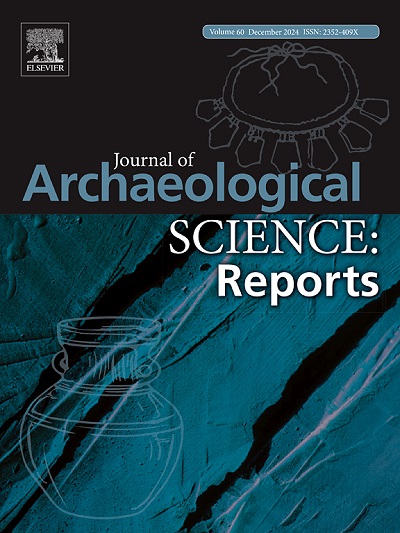Tracing traditions: An analytical study of Late Chalcolithic ceramics from Cyprus
IF 1.5
2区 历史学
0 ARCHAEOLOGY
引用次数: 0
Abstract
The Late Chalcolithic period (ca. 2900–2400 BCE) in Cyprus represents a dynamic phase characterised by significant societal and material transformations, laying the foundation for the island’s transition into the Bronze Age. In pottery production, notable developments include a focus on red and/or black monochrome wares, which were produced across the island. This paper presents findings of an intra- and inter-site compositional and technological analysis of ceramic fabrics from four Late Chalcolithic sites in southwestern and central Cyprus, i.e., Chlorakas-Palloures, Kissonerga-Mosphilia, Ambelikou-Agios Georghios, and Politiko-Kokkinorotsos. The study examines Red and Black Stroke-Burnished, Red Monochrome, and Spalled Wares, and samples of Red (and Black) Lustrous and Coarse wares. These ceramics were analysed using ceramic thin section petrography and handheld energy-dispersive X-ray fluorescence spectrometry to determine their mineralogical, chemical, and technological characteristics. The analytical data have been integrated with contextual information and a prior detailed macroscopic examination of the selected samples. This project aims to investigate pottery technologies and assess the degree of fabric variability at local, regional, and inter-regional levels. Additionally, it explores pottery production processes and pottery distribution patterns, with a particular focus on identifying potential inter-site interaction within Cyprus during the Late Chalcolithic period.
追溯传统:塞浦路斯晚期铜石器陶瓷的分析研究
塞浦路斯的晚期铜石器时代(约公元前2900-2400年)代表了一个以重大的社会和物质变革为特征的动态阶段,为该岛过渡到青铜时代奠定了基础。在陶器生产方面,值得注意的发展包括对红色和/或黑色单色陶器的关注,这些陶器在全岛生产。本文介绍了塞浦路斯西南部和中部四个晚铜石器时代遗址(即Chlorakas-Palloures, Kissonerga-Mosphilia, Ambelikou-Agios Georghios和Politiko-Kokkinorotsos)的陶瓷织物的遗址内和遗址间成分和技术分析的发现。该研究检查了红色和黑色笔画抛光,红色单色和剥落的器皿,以及红色(和黑色)有光泽和粗糙器皿的样品。使用陶瓷薄片岩石学和手持式能量色散x射线荧光光谱法对这些陶瓷进行了分析,以确定其矿物学,化学和工艺特征。分析数据已与上下文信息和选定样本的先前详细宏观检查相结合。该项目旨在调查陶器技术,并评估地方、区域和跨区域水平的织物可变性程度。此外,它还探讨了陶器的生产过程和陶器的分布模式,特别侧重于确定晚期铜石器时期塞浦路斯境内潜在的遗址间相互作用。
本文章由计算机程序翻译,如有差异,请以英文原文为准。
求助全文
约1分钟内获得全文
求助全文
来源期刊

Journal of Archaeological Science-Reports
ARCHAEOLOGY-
CiteScore
3.10
自引率
12.50%
发文量
405
期刊介绍:
Journal of Archaeological Science: Reports is aimed at archaeologists and scientists engaged with the application of scientific techniques and methodologies to all areas of archaeology. The journal focuses on the results of the application of scientific methods to archaeological problems and debates. It will provide a forum for reviews and scientific debate of issues in scientific archaeology and their impact in the wider subject. Journal of Archaeological Science: Reports will publish papers of excellent archaeological science, with regional or wider interest. This will include case studies, reviews and short papers where an established scientific technique sheds light on archaeological questions and debates.
 求助内容:
求助内容: 应助结果提醒方式:
应助结果提醒方式:


